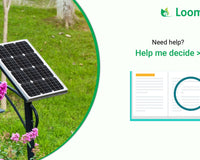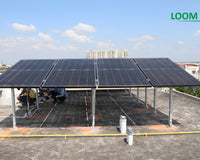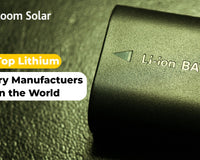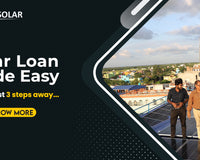Monocrystalline solar panels and bifacial solar panels have their own advantages, and the choice between the two depends on your specific requirements and budget. Let's compare the two types:
Monocrystalline Solar Panel
Efficiency: Monocrystalline solar panels are known for their high efficiency rates, typically ranging from 15% to 22%. Higher efficiency means they can generate more electricity in a smaller space.
Aesthetics: Monocrystalline solar panels often come in a sleek black color, which many homeowners find visually appealing.
Space Efficiency: Due to their higher efficiency, monocrystalline solar panels require less roof space to generate a specific amount of electricity compared to other types.
Cost: Monocrystalline panels are generally more expensive than polycrystalline panels but can be cost-effective in the long run due to their efficiency.
Bifacial Solar Panel
Bifacial Advantage: Bifacial solar panels have the unique feature of capturing sunlight from both sides of the panel, allowing them to generate additional energy by reflecting sunlight from the ground or surrounding surfaces.
Efficiency: Bifacial solar panels have higher efficiency compared to polycrystalline panels, but slightly lower efficiency compared to monocrystalline panels.
Performance in Certain Environments: Bifacial solar panels perform exceptionally well in areas with high albedo, where there are reflective surfaces like snow, water, or light-coloured rooftops, as they can utilize the reflected light to generate additional electricity.
Cost: Bifacial solar panels can be more expensive than monocrystalline panels due to their additional design features.
Which One is Best for Home Use?
The choice between monocrystalline solar panels and bifacial solar panels depends on various factors, including your budget, available roof space, local environmental conditions, and aesthetic preferences.
If you have limited roof space and want to maximize electricity generation, monocrystalline solar panels might be a better choice due to their higher efficiency.
If you have ample roof space, are in an area with high albedo (significant reflective surfaces), and can afford a slightly higher upfront cost, bifacial solar panels can be an excellent option for increased energy generation.
Ultimately, I recommend consulting with a reputable solar installer who can conduct a site assessment, consider your specific needs, and provide personalized recommendations for the best solar panel type for your home. The solar industry is continually evolving, so there might be new advancements or changes in technology beyond my knowledge cutoff date that could also influence the decision.












